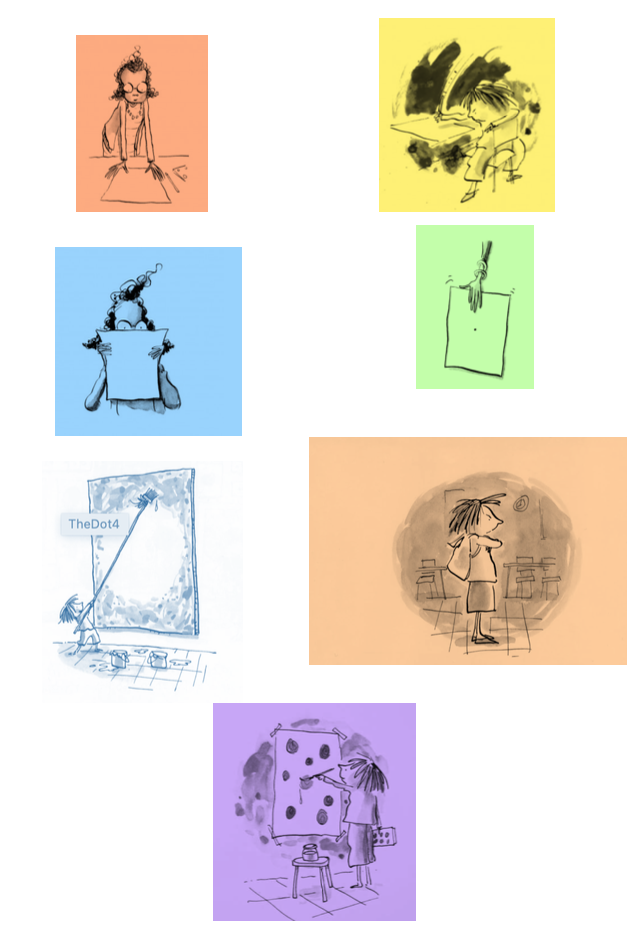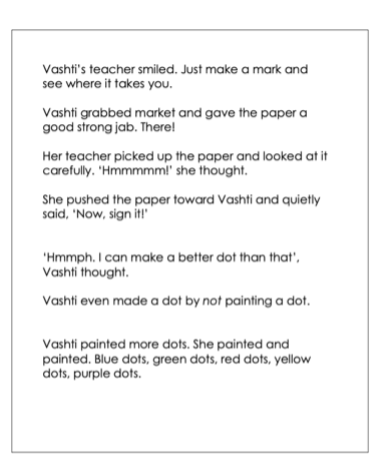You caught a beauty!!!
Download PDF of scaffold here.
theory behind scaffold…
Introducing books in any class can seem daunting, especially when we know the attention span (or rather lack thereof) of our students. Giving our students the chance to interact, make predictions, use critical thinking skills and visual clues, can augment their enthusiasm for reading from the outset. Combining this scaffold with …………………………………..
……………………………………… speaking, predicting – directing thoughts to an unknown outcome – has direct and expansive influences on cognitive functions, including*:
- perception
- decision making
- mind, motor and perceptual processing
The act of predicting leads the student to a ……………………………………………………………. when it is stimulated by imagery that is unique. When those images are later clarified, the brain is able to confront the information heuristically**, and so more efficiently.
This scaffold was created for a teacher who suffered from his traditional training. Though very willing to introduce dynamic activities for his students, he was taught to use the teacher-centred model in his classroom. For this reason, when a visitor entered his classroom, all the students were probably sitting at individual desks, heads down, trying their best to understand the pages of a book they are expected to read and react to on their own, and silently. If you were to ask one of the students what the pages were about, though they may have looked completely immersed in their reading beforehand, they would have had to admit that they have very little understanding either of the text or the overall concept of the book.
Here is how this very eager and well-intentioned teacher made just a few modifications to help his students to understand and appreciate the books he has assigned. It will work for you as well!
The examples given here are from the graphic story The Dot by Peter H. Reynolds. Behind this ostensibly simple illustrated story is a powerful lesson in self-expression, compassion, hidden talents, high expectations, believing in a person’s best version of her/himself, and possibilities.
* https://www.ncbi.nlm.nih.gov/pmc/articles/PMC2904053/
** A heuristic is a mental shortcut that allows people to solve problems and make judgments quickly and efficiently.
step by step…
1. Choose 8-10 images from the book, copy them to a document, print out a set for each pair or group of students (groups of three), and cut them up individually. (See example on the right, and this template.)


2. Copy and paste 8-10 sentences from the book that correspond (loosely) to the images you’ve chosen. …………………………..and cut them up individually.
- Hand out a set of …………………………………………
- They have five (5) minutes to study the images and then predict:
- how t……………………..
- what they h…………………………..
- what order might they …………………………….
- what the ………………………………………….might be
- Give the students a signal and pairs/groups merge to discuss what they have predicted.
- They negotiate their conclusions and …………………………………….point.
- Next, give t………………………………..
- Groups read the sentences, connect them to the images they b…………………………………… images if necessary.
- Groups create a visual map with the images to illustrate ……………………….underneath each one.
- They mount these visual maps o……………………………………………………… them to the other groups.
- Those not presenting take notes and formulate 2………………………………ay have questions (always using the Four Rules of Respectful Feedback.)
Example:
- Formative assessment: Show sentences from other parts in the book that you didn’t include in the activity. Students negotiate …………………………………………..the plot of the story. You can also use these ideas as extensions.
- Reflection: Students record ………………………………… linguistics and images.



Scaffoldingmagic.com is your entryway into DYNAMIC bilingual learning methodologies, such as Phenomenon-Based Learning, CLIL, EMI, and ESL. You’ll find ways to implement critical thinking tools (DOK) to promote higher level thinking, the growth mindset, instill an ethic of excellence, deep reflection on learning, and all through multi-cultural, interdisciplinary activities. We have the keys to turning competences into action and to creating collective efficacy in your school so you move ahead as a unified, enthusiastic team.



